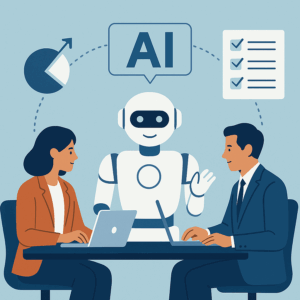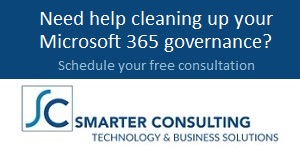What It Really Takes to Become an AI-First Organization
When Microsoft’s Jared Spataro talks, people in the modern work world tend to listen. His recent piece on the three new patterns of work defining AI-first companies sketches a fascinating future — one where humans and AI collaborate fluidly across every layer of business. It’s optimistic, energizing, and, frankly, a little utopian.
 He argues that the frontier of work is taking shape across three patterns:
He argues that the frontier of work is taking shape across three patterns:
- Human + AI Assistant – individuals use AI to remove repetitive tasks and amplify their impact.
- Human–Agent Teams – AI agents become part of the workflow, like digital coworkers handling defined tasks.
- Human-Led, Agent-Operated – humans set direction and strategy while agents execute most of the operational steps.
It’s a compelling framework, and it rings true for anyone exploring AI-driven productivity. But let’s be honest: most organizations are nowhere near ready for that third stage. Moving from “AI helper” to “AI operator” isn’t a software upgrade; it’s an organizational transformation.
Let’s break down what these patterns mean in practice — and the messy, essential groundwork required to make them work.
1. Assistants Are Easy — Habits Are Hard
It’s simple enough to deploy Copilot, ChatGPT, or Gemini. The challenge isn’t access; it’s adoption.
Spataro’s first pattern — “Human + AI Assistant” — sounds effortless: every knowledge worker has an intelligent sidekick. But the real friction is behavioral. To use AI effectively, people need to unlearn old habits of search, discovery, and output creation.
Most workers still default to typing into a browser instead of prompting a generative tool. They haven’t learned how to structure requests, review AI responses critically, or build workflows around continuous iteration. Until that mindset shift happens, the “AI assistant” pattern will remain surface-level — a shiny add-on to the same old habits.
What it takes: training, repetition, and leadership modeling. You don’t just hand someone Copilot. You teach them prompt strategy, bias detection, and when not to trust the machine. AI literacy is the new digital literacy.
2. Agent Teams Demand Real Change Management
The second pattern — “Human–Agent Teams” — is where things start to get interesting, and complicated. In theory, AI agents collaborate with humans to co-own a workflow. In reality, that means re-architecting process boundaries, decision gates, and accountability models.
In a marketing team, for instance, you might deploy an agent that drafts campaign content, performs audience segmentation, and suggests timing. Sounds great, right? Until you realize the AI needs access to sensitive data, brand tone rules, and metrics across multiple systems — and every one of those touches governance and compliance.
Organizations underestimate how hard it is to build trust around autonomous action. Before agents can act, you need clear policies for data access, content quality, and error handling. And when something goes wrong (it will), teams need transparent escalation paths.
What it takes: governance frameworks, well-defined boundaries for automation, and people who understand both technology and process. Without that, your “AI team member” is just a novelty bot in a chat thread.
3. Agent-Operated Workflows Require AI Plumbing and Culture
Spataro’s third pattern — “Human-Led, Agent-Operated” — is the dream state: humans setting direction while AI runs operations. It’s seductive, but it assumes a level of maturity that most companies don’t yet have.
For agents to handle end-to-end workflows, your foundation has to be rock-solid. That means unified data, consistent metadata, transparent logging, and defined oversight mechanisms. In other words — plumbing before polish.
And then there’s the cultural side. Employees must trust the system enough to let go of control but stay engaged enough to monitor and guide. That tension between delegation and oversight will define management in the AI era.
What it takes: data maturity, technical observability, human oversight loops, and an explicit culture of accountability. You’re not eliminating people; you’re evolving their roles toward strategy, interpretation, and governance.
4. The Hidden Fourth Pattern: Hybrid Workflows
In reality, most companies won’t live in just one of Spataro’s patterns. They’ll operate across all three simultaneously — and that’s okay. Your HR team might still be in “assistant mode,” your IT department testing “agent teams,” and your finance group dipping a toe into “agent-operated” territory.
The key is not to rush maturity for the sake of optics. Instead, build hybrid workflows where humans and AI continuously re-balance responsibility based on context. Start with micro-automation. Learn where AI adds the most value. Expand from there.
5. Optimism Is Fuel, But Pragmatism Builds the Engine
Spataro’s optimism is valuable; it pushes the conversation forward. But the organizations that truly become AI-first won’t get there through enthusiasm alone. They’ll get there through discipline — by tackling AI literacy, data readiness, governance, and cultural adaptation in parallel.
The shift to AI-driven work isn’t just technological. It’s a social and managerial challenge. AI changes how we define value, how we make decisions, and how we measure contribution. That’s a much bigger transformation than simply rolling out another tool in Microsoft 365.
The companies that succeed will be those that balance ambition with patience — who can see the horizon Spataro describes, but who are willing to slog through the reality of unlearning, retraining, and rebuilding along the way.
In the End
AI won’t magically make organizations smarter. It will amplify whatever culture, process, and leadership already exist. If you have chaos, you’ll get faster chaos. If you have clarity, you’ll get compounding insight.
Becoming an AI-first organization isn’t about having agents that act like humans — it’s about building humans who think like systems. And that’s where the real transformation begins.




